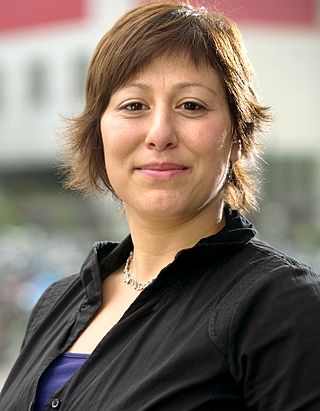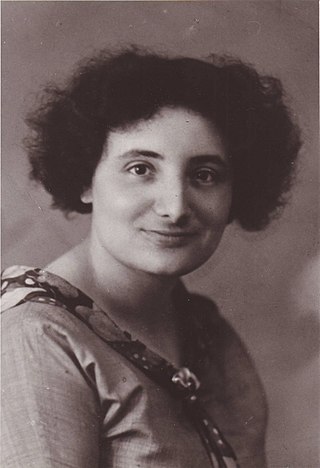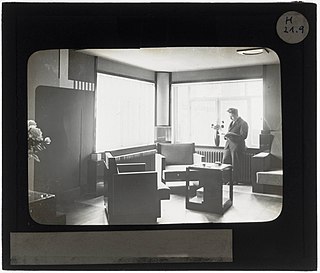
Frans Masereel was a Belgian painter and graphic artist who worked mainly in France. He is known especially for his woodcuts which focused on political and social issues, such as war and capitalism. He completed over 40 wordless novels in his career, and among these, his greatest is generally said to be Passionate Journey.

Petrus Josephus Hubertus "Pierre" Cuypers was a Dutch architect. His name is most frequently associated with the Amsterdam Central Station (1881–1889) and the Rijksmuseum (1876–1885), both in Amsterdam. More representative for his oeuvre, however, are numerous churches, of which he designed more than 100. Moreover, he restored many monuments.

Willem Arnoldus Witsen was a Dutch painter and photographer associated with the Amsterdam Impressionism movement. Witsen's work, influenced by James McNeill Whistler, often portrayed calm urban landscapes as well as agricultural scenes. He also created portraits and photographs of prominent figures of the Amsterdam art world, as well as other artists, such as French Symbolist poet Paul Verlaine.

Renaat Braem was a leading Belgian architect and urban planner in the latter half of the twentieth century.

Meyrem Almaci is a Belgian politician from Flanders and member of the ecological party Groen. On 10 June 2007, she was elected to the Belgian Chamber of Representatives for the first time. She was re-elected in 2010 and in 2014 when she also became the president of Groen. In 2019 she left the Belgian parliament and was elected in the Flemish Parliament.

Kerkom-bij-Sint-Truiden is a village in the Sint-Truiden municipality of the Limburg province in the Flemish Community of Belgium. Kerkom-bij-Sint-Truiden was an independent municipality until 1970 when it merged with Borlo. In 1976, the village opted to become part of Sint-Truiden.

Middelheim Open Air Sculpture Museum is a sculpture park of 30 acres in the park part of the Middelheim Nachtegalen Park at Antwerp. The Middelheim Museum collection has approximately 400 works of art on display. These include around 215 sculptures, featuring artists such as Carl Andre, Franz West, Auguste Rodin and many more. Along with the addition of new works every year, the museum invites contemporary artists to engage in an artistic conversation with works part of the permanent collection and the environment surrounding them, leading to the establishment of performances and exhibitions and by various kinds of artists. Works such as ones by Roman Signer and Ai Weiwei are also created specifically for the museum.

Brussels-Congress railway station is a train stop on the North–South connection in the City of Brussels, Belgium. It is located at 25, boulevard Pacheco/Pachecolaan, near the State Administrative Centre. Opened in 1952, it served as a railway station for 50 years. In 2002, the ticket offices closed and it was downgraded to a train stop. With only few passengers a day using Brussels-Congress, plans were being made to close it completely. However, up to now, none has been executed.

Bent Van Looy is a Belgian-Flemish musician, singer and songwriter. He has been the frontman and singer for Das Pop, the Belgian band he founded in Ghent in 1994 together with schoolfriends Reinhard Vanbergen, Niek Meul and Lieven Moors. He was also the drummer of Soulwax, a project of the Dewaele brothers. Van Looy recorded solo albums, presented on TV and radio, and is a painter.

Frederika Sophia "Fré" Cohen was a Dutch artist and graphic designer.
CornilCacheux was a French pipe organ maker.
Tine Van Aerschot is a Belgian graphic designer, dramatic adviser, writer and theatre director.

Jozef Cantré was a Belgian sculptor and illustrator. He was one of the main artists in the development of the movement of Flemish Expressionism.
Ann Van Sevenant is a Belgian philosopher.

Richard Nicolaüs Roland Holst was a Dutch painter, draftsman, lithographer, book cover designer, etcher and writer. Many of his works were in a modified Symbolist style.

Hansje van Halem is a Dutch graphic designer and type designer. Her work is typified by geometric, repetitive, sometimes almost psychedelic patterns. She works at the intersection of text, illustration, pattern, colour, texture, distortions, interruptions, variations, symmetry, systematic approach and irregularities. Van Halem combines the more open rules of patterns with the tighter ruleset of typography and explores the boundaries of type design. She uses the viewer’s distance to the work to move at the edge of legibility and non-legibility. In her understanding background and type should become one layer. Important to her are the process itself, “playing” around and working with trial and error. Her commissions rather revolve around the creation of identities, whole covers and patterns than individual fonts.

Frans Smet-Verhas, born Frans Smet, was a Belgian architect. He was one of the principal designers to employ Art Nouveau in Antwerp at the beginning of the twentieth century.

Hubrecht (Huib) Hoste was a Belgian architect, designer and urban planner. He is considered the pioneer of modern architecture in Belgium.

Annelys de Vet is a designer, educator and researcher. She runs her own design practice under the name DEVET. From 2009 until 2019 she headed the MA in Design 'Think tank for Visual strategies' at the Sandberg Instituut in Amsterdam, the master's course of the Gerrit Rietveld Academie. There she initiated the temporary masters course Disarming Design, from 2020 until 2022.

Charles Van Havermaet or Karel Van Havermaet was a Belgian draughtsman, painter and illustrator.He is mainly known for his genre scenes, portraits, still lifes and allegorical paintings. After training in his native Antwerp he spent the rest of his career in London.

















